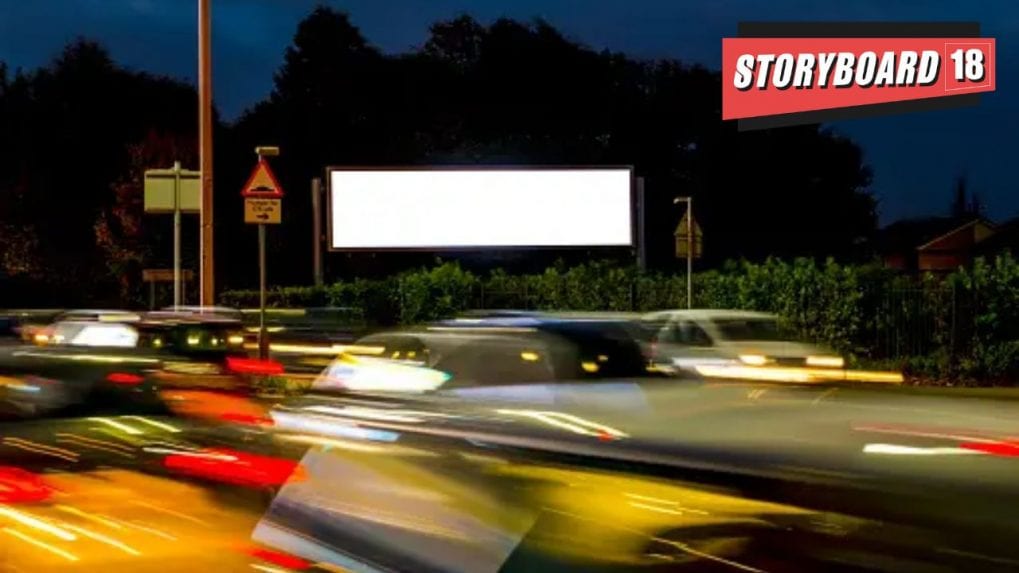Brand Makers
Dil Ka Jod Hai, Tootega Nahin

In a bold pivot toward modern, sustainable advertising ecosystems, state governments across India are fast-tracking their shift from static hoardings to Digital Out-of-Home (DOOH) displays. Leading the charge is Uttar Pradesh, which aims to double its advertising revenues over the next five years by replacing traditional outdoor hoardings with energy-efficient digital and electronic billboards.
The Uttar Pradesh government recently announced revamping its outdoor advertising framework by replacing traditional hoardings with digital displays under the draft Advertising Policy-2025. Aimed at boosting sustainability and revenue, the policy targets a twofold increase in ad earnings—from Rs 78.9 crore in 2024-25 to Rs 158.7 crore by 2029-30. The proposal, prepared by the Urban Development Department, includes expanding municipal limits and tapping both digital and static ad formats, and is expected to be tabled before the Cabinet soon.
“As far as I know, the initiative is likely to be implemented in a phased and regulated manner, starting with key urban centers, transit hubs, and government-controlled properties,” says Yogesh Lakhani, Chairman and Managing Director, Bright Outdoor Media. “Local bodies will play a major role in identifying permissible zones, granting digital display licenses, and ensuring safety and compliance. Public-private partnerships may also be encouraged to ease infrastructure investment and operational support.”
By embracing DOOH, state governments are tapping into a rapidly growing advertising medium that offers dynamic, data-driven content delivery, greater ROI for brands, and significantly better monetisation for municipalities.
Why States Are Betting on DOOH
According to Rajesh Radhakrishnan, Co-Founder and CMO at Vritti iMedia, traditional hoardings have long been inefficient. "Only a fraction—say 10 out of 100—of static hoardings are sold at full price, while the rest are heavily discounted or remain unsold. DOOH allows for dynamic, programmatic ad placements that are far more efficient," he explains.
These digital formats offer not just flexibility, but the ability to schedule ads based on the time of day, audience profiles, or even weather—making them more engaging and relevant. “It’s not just a policy shift, but an industry evolution,” says Radhakrishnan, citing similar momentum in states like Maharashtra, Karnataka, Tamil Nadu, Andhra Pradesh, and cities like Hyderabad and Pune.
“This move reflects the evolution of outdoor advertising in line with global trends,” adds Lakhani. “DOOH offers better flexibility, dynamic content delivery, and higher engagement. Several states like Maharashtra, Gujarat, and Karnataka have already initiated digital-friendly policies in select cities.
Partho Ghose, CEO of Insync at Tribes Communication, adds that the Uttar Pradesh government’s move is also tied to environmental goals. “The installation of LED-based digital displays in cities like Lucknow, Agra, and Kanpur will reduce carbon emissions and urban clutter. Technology partners will enable features like auto-brightness control and remote monitoring to ensure energy efficiency,” he says.
How Much Revenue Can States Expect?
Current market estimates peg the DOOH market in India at around Rs 700 crore in 2024, comprising about 12% of total OOH revenues. However, that share is expected to grow substantially with supportive state-level policies and infrastructure upgrades.
The cost advantage is also considerable. A static 6x3 foot hoarding might cost around Rs 10,000 for a single campaign. In contrast, a dynamic DOOH screen at the same location could reduce costs by up to 70%—as low as Rs 3,000—while delivering double the impact through rotation and contextual targeting.
As a result, DOOH not only attracts big-budget national advertisers but opens the door for local businesses and mid-sized brands that previously couldn’t afford static prime placements. This democratisation of visibility could be a game-changer in tier-II and III cities, say experts.
Experts believe that a well-implemented DOOH policy can double OOH revenue for states. Municipal bodies also benefit from reduced wastage and enhanced inventory utilisation. With smart content scheduling and screen-sharing capabilities, one physical location can now serve multiple advertisers without additional infrastructure.
Policy Support and Implementation Challenges
States like Goa and Kerala are already instituting eco-conscious outdoor advertising policies. Goa’s 2025 Outdoor Advertisement Bill calls for GIS-based planning and regulates the placement of digital boards, while Kerala has banned PVC flex materials altogether.
Mumbai’s draft BMC Outdoor Policy 2024, which proposes shutting digital hoardings by 11 pm to curb light pollution, reflects an increasing emphasis on responsible implementation. “Visual clutter is often cited as a DOOH drawback, but programmatic content control actually reduces this. Traditional hoardings are far worse in terms of clutter,” notes Radhakrishnan.
Still, successful DOOH deployment hinges on robust zoning, regulation of brightness levels, and strict control over content speed, especially in high-traffic or accident-prone zones. Both Ghose and Radhakrishnan agree that state governments must play the enabler role by ensuring infrastructure readiness, providing policy support, and onboarding competent media partners.
As cities compete to modernise public infrastructure and balance commercial goals with environmental concerns, DOOH presents a win-win. It enhances urban aesthetics, empowers municipal bodies with scalable revenue, and offers advertisers a more intelligent and impactful canvas.
From Delhi’s sharp-tongued lyricists to Chennai’s bilingual innovators and North-East India’s experimental beatmakers, Rap 91 LIVE’s lineup was a sonic map of the country’s cultural diversity.
Read MorePiyush Pandey was a force of nature - brute force for his opponents and a natural creative at heart.